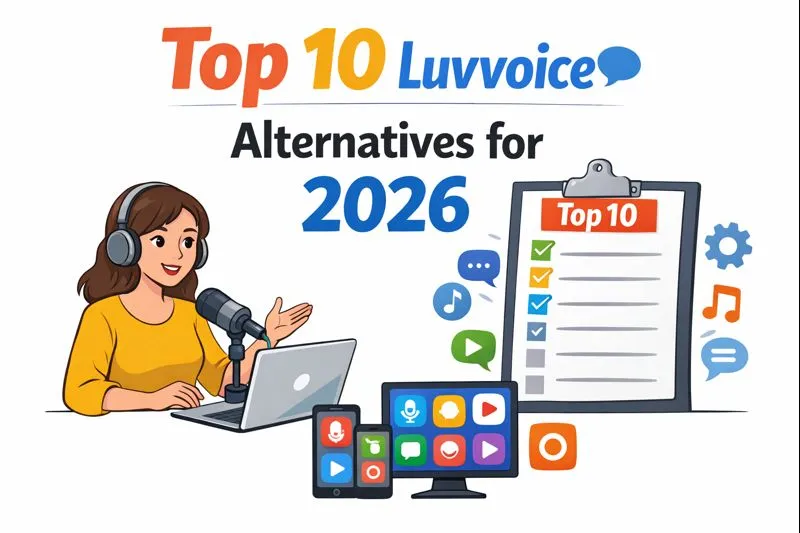Decoding Neural Text-to-Speech Architectures A Video Producer's Guide
TL;DR
Decoding Neural Text-to-Speech Architectures: A Video Producer's Guide
The Rise of Neural Text-to-Speech in Video Creation
Neural Text-to-Speech (tts) is kinda changing the game, ain't it? It's not just about computers talking; it's about them sounding real.
Neural tts is making waves in video creation, and here's why:
- More engaging voiceovers: ai-generated voices sound more natural, keeping viewers hooked.
- Cost savings: Forget expensive voice actors; ai can do a solid job for way less.
- Scalability: Need tons of videos? Neural tts can churn 'em out without breaking a sweat.
- Multilingual reach: Reach audiences across the globe with voices in different languages.
Traditional tts? It sounds robotic, lacks emotion, and well, it's just not that great. Neural tts on the other hand, is all about:
- Naturalness: Voices sound human, with proper intonation, and that just sounds better.
- Expressiveness: ai can convey emotions, making videos more impactful.
- Adaptability: Neural models can learn and adapt to different speaking styles.
So, neural tts is a game-changer, moving us from clunky, rule-based systems to ai-powered speech that doesn't sound like a robot. Microsoft uses models like FastSpeech to achieve fast and accurate text-to-speech conversion. FastSpeech, built upon the Transformer architecture, offers significant speed advantages over older models like WaveNet by enabling parallel processing. This means video producers can generate voiceovers much quicker, a critical factor in fast-paced production workflows. Unlike models that generate audio sample by sample, FastSpeech predicts acoustic features in parallel, drastically reducing synthesis time without a major hit to quality. This speed and accuracy make it ideal for generating narration for explainer videos, marketing content, or any project where rapid turnaround is key.
Now, let's get into why neural tts is such a big deal for video producers specifically.
Key Neural TTS Architectures Unveiled
Neural Text-to-Speech (TTS) has come a long way, hasn't it? I mean, who would've thought computers could sound this human? Let's dive into the brains behind these realistic voices and check out some of the key architectures making it all happen.
First up is WaveNet. It's an autoregressive model, meaning it generates audio sample by sample, conditioning each new sample on all the previous ones. This step-by-step generation allows it to capture very fine-grained details in the audio waveform, resulting in exceptionally natural and high-fidelity speech. However, this sequential process makes it computationally intensive and slow for real-time synthesis. For video producers, this means WaveNet is best suited for situations where pristine audio quality is paramount and generation time is less of a concern, like for high-production value documentaries or audio dramas.
Then there's Tacotron, which is all about turning text sequences into speech. Tacotron uses an encoder-decoder architecture. The encoder processes the input text, and the decoder generates a mel-spectrogram, a visual representation of the audio. A key component is the CBHG (Convolutional-Sequence-to-Sequence) module. This module is a stack of convolutional layers followed by a bidirectional LSTM. It's designed to extract rich phonetic and prosodic features from the text input, helping the model understand the nuances of pronunciation and intonation. While Tacotron offers a good balance of quality and speed compared to WaveNet, its sequential nature in generating the mel-spectrogram can still be a bottleneck.
Finally, we got Transformers. These guys are all about speed and efficiency. Transformers ditch those old recurrent neural networks (rnns) for something called multi-head attention. This mechanism allows the model to weigh the importance of different words in the input sequence when processing any given word, enabling it to capture long-range dependencies in text much more effectively than RNNs. Crucially, attention allows for parallel processing of the input sequence, meaning the model can look at all words simultaneously rather than processing them one by one. This parallelization is a major reason for the speed improvements seen in Transformer-based TTS models. Models like FastSpeech and FastSpeech 2 are built on this Transformer foundation. They further optimize the architecture, for instance, by using a length regulator to control speech duration and by predicting acoustic features in parallel, making them significantly faster than previous architectures while maintaining high audio quality. This speed is a huge win for video producers needing to generate voiceovers quickly.
So, these are some of the big players in the neural tts world. Each has its strengths and weaknesses, but they're all pushing the boundaries of what's possible.
Next up, we'll look at how these architectures are changing the game for video producers.
Making the Right Choice: Factors to Consider
So, you're trying to pick the right neural tts setup, huh? It's not always straightforward, but a few key things can steer you in the right direction.
Balancing audio quality and computational cost is crucial. Architectures like WaveNet deliver exceptional audio fidelity but demand significant processing power, making them expensive to run. Transformer-based models like FastSpeech, on the other hand, offer a much better balance, providing high-quality audio with considerably lower computational requirements and faster synthesis times, which is often more practical for video production budgets and workflows.
Consider whether you need real-time processing or if you can render the audio offline. Real-time apps, like interactive chatbots, need faster models. For video production, offline rendering is common, allowing you to leverage models that might be slower but produce superior quality, or to use faster models like FastSpeech for rapid iteration.
Don't forget about scalability. Cloud-based tts services can handle large volumes of requests, which is great for video production houses pumping out content.
Look into options for voice cloning and style transfer. These let you create unique voices that match your brand, or even mimic specific actors. The expressiveness of models like Tacotron and advanced Transformer variants can help achieve this.
Adjusting speaking styles, emphasis, and pronunciation can really dial in the perfect tone for your videos. It's all about getting the right feel, y'know? Features like length regulators in FastSpeech help control pacing, which is vital for matching visual cues.
Make sure the voice is consistent across all your video content. Brand consistency is important, and it's worth the effort to make sure your ai voice is on-brand.
If you're aiming for a global audience, language support is a big deal. Check what languages and dialects are supported, and how accurate the pronunciation is.
Also, ensure the voice is culturally appropriate. What sounds good in one culture might not in another, so double-check that before you go too far into production.
Localizing video content for international markets can really boost engagement. It's not just about translation; it's about adapting the message.
Choosing the right neural tts architecture is a balancing act, but focusing on quality, customization, and multilingual capabilities will get you far.
Practical Applications in Video Production
Neural Text-to-Speech (tts) is more than just a tech buzzword; it's changing how video content is created, isn't it? Let's see how this tech is getting real-world use.
Creating clear and concise narratives: Neural tts helps simplify complex stuff. Imagine turning a dense financial report into a simple, engaging video explainer. The naturalness and intelligibility offered by models like FastSpeech ensure the message comes across clearly.
Adding emotional depth to complex concepts: You can use ai to convey empathy in healthcare videos, making patients feel understood. The expressiveness that advanced architectures can achieve, by controlling intonation and subtle vocal inflections, allows for more impactful emotional delivery.
Maintaining viewer attention with dynamic pacing: Varying the speech rate keeps viewers hooked. Features like length regulators in FastSpeech allow precise control over speaking speed, enabling dynamic pacing that aligns perfectly with on-screen action or graphics.
Generating consistent and accessible audio for training modules: Keep a uniform voice across all modules, which is great for brand consistency.
Personalizing the learning experience with custom voices: Create unique voices for different courses, making learning more engaging.
Reducing production time and costs: ai can generate audio faster and cheaper than hiring voice actors. The speed of Transformer-based models like FastSpeech is a major contributor here, enabling rapid turnaround for large volumes of content.
Crafting compelling brand stories: Use ai to narrate customer testimonials, adding authenticity to your marketing.
Driving engagement with persuasive messaging: Adjust the tone of the voice to be more persuasive, influencing viewers to take action.
Creating a lasting impression on potential customers: A unique voice helps your brand stand out.
So, that's how neural tts fits into video production.
The Future of Neural TTS and Video: A Glimpse Ahead
Okay, so what's next for neural tts and video production? It's kinda wild to think about where this tech is headed.
- More expressive AI voices are coming. We are talking about models that can really nail those subtle nuances in human speech, making characters feel way more believable. This means even better emotional delivery and more natural-sounding dialogue.
- AI tools are gonna be better integrated into video editing software. Imagine automatically syncing voiceovers or generating captions, that would make things easier. Think of seamless workflows where ai voice generation is just another tool in your editing suite.
- We gotta think about the ethics, though. Protecting voice data and making sure ai ain't used to create deepfakes is gonna be super important. Responsible development and usage will be key.
So, neural tts is going to keep changing video, and that is for sure.






